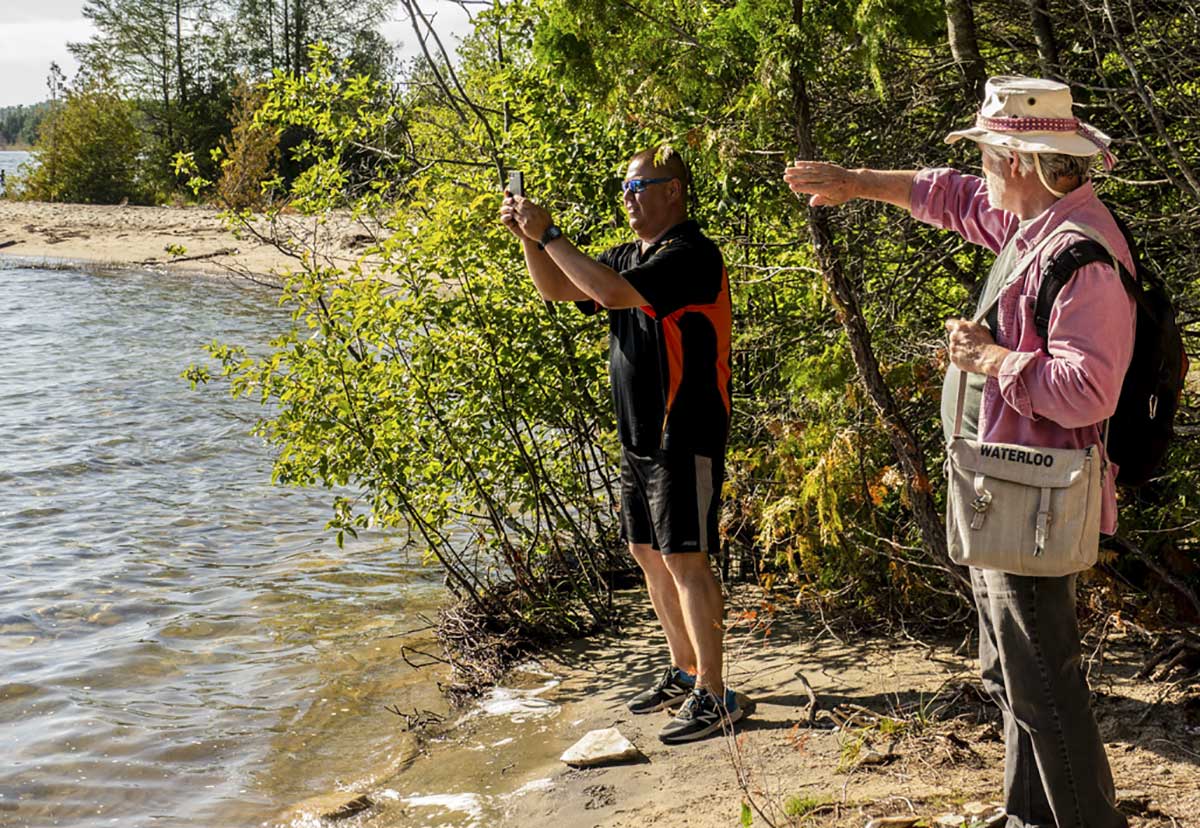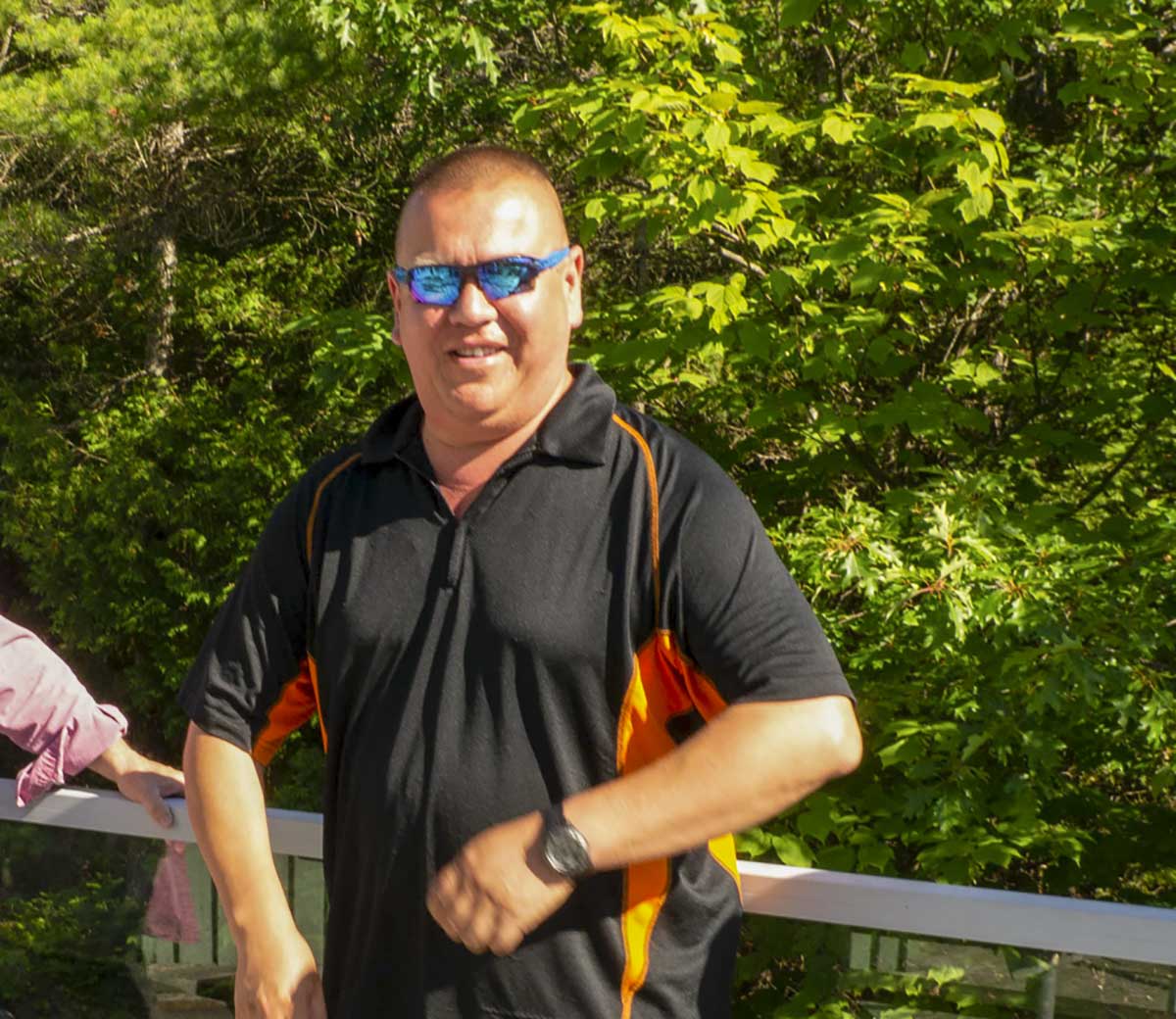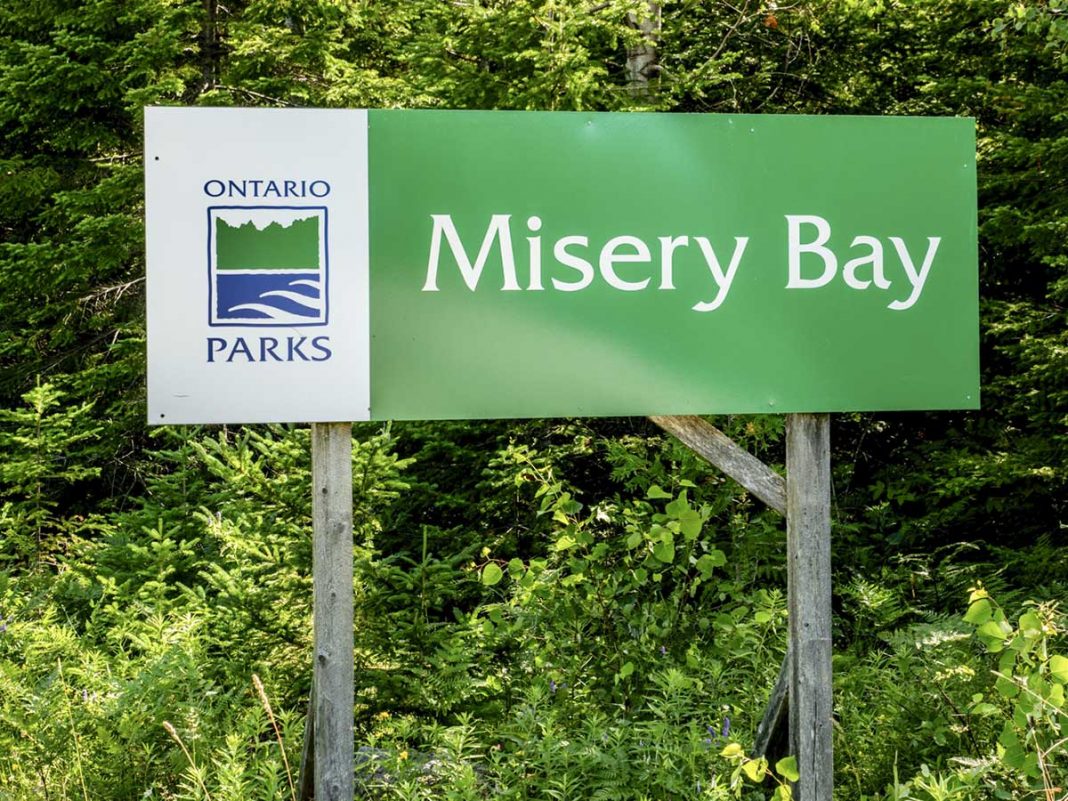by Isobel Harry
MISERY BAY – When former elite long distance runner Mark Peltier would drive by Misery Bay Provincial Park as part of his job as co-ordinator of the Healthy Living Youth Program with Noojmowin Teg, he had no idea there were trails in there. Born in Wiikwemkoong 42 years ago, he won the elementary school Island cross-country championship as a young lad and, after moving to North Bay for high school, went to the Ontario Federation of School Athletic Associations (OFSAA) for cross-country and track (the 2,000 metre steeplechase), and in college won back-to-back Ontario Colleges Athletic Association (OCAA) gold medals for cross-country. “My 16-year-old daughter, Sierra Pangowish, has my genes,” says Mark, “and is an elite distance runner herself. She is Wiky High School’s first athlete to attend OFSAA cross-country.”
For 12 years with Noojmowin Teg, Mark often drove past the park, sometimes hosting the summer Olympics for youth in Zhibaahaasing First Nation, but it was “not until recently” that he discovered that his favourite pastime, running, was possible on Misery Bay Provincial Park’s trails. He had pretty much explored most Island trails, he thought, including “intense workouts on the Providence Bay sand, on trails at the Cup and Saucer, Kagawong, and at Sheguiandah, even ran the once-popular relay event from Espanola to Little Current and got to run the final leg of that race over the bridge.” But, until now, never Misery Bay.
With thoughts of perhaps recapturing the passion that was never really lost, only set aside momentarily, Mark Peltier sat down and wrote to The Expositor’s Staycation summer feature editor outlining his desire to run in Misery Bay. As part of the prize for his winning Staycation story, the newspaper threw in an eco-tour of the park with Marcel Beneteau and Peter Barnett, both members of the board of the Friends of Misery Bay and avid nature lovers (Marcel is also president of the Manitoulin Nature Club), and experts in the rare flora and ancient geology of the park, both retired from demanding careers and volunteering their time.
Everyone arrives at once at the Interpretive Centre (closed this season during the pandemic), introductions are made and immediately an orientation to the wonders of the park begins as the striated alvars directly under the raised verandah of the centre are examined and explained.
Misery Bay Provincial Park is famous for its alvars, sprawling limestone pavements that host rare vegetation in deep fissures and tiny cracks. Ten thousand years ago, the glaciers of Lake Nipissing retreated northward and left huge boulders and rocks on this moonscape of alvars that still bear the scrapes and gouges of the kilometres-thick moving ice sheets.
Globally rare, alvars only can be found off the coast of Sweden, in the eastern European Baltic region, the United Kingdom and Ireland. In North America, almost 75 percent of these alvars are located in Ontario, according to the Nature Conservancy of Canada (NCC). Misery Bay’s massive alvar swaths stretch out as far as the eye can see; they carpet parts of the forest floor and play host to countless rare and endangered species of plants (last count was 470).

Peter Barnett provides the commentary on geology – noting the ancient water levels and beaches of prehistory; we stare at some choppy, wavelike striations called “chatterings” or “chatter marks” left by rocks dragged along by the massive lumbering ice. Marcel Beneteau, stooping every few feet to examine the tiniest little flowers and plants you’ve ever seen, points to some low calamint and narrow-leaf vervain by the side of the groomed trails; further discoveries of harebells, wild basil and cow wheat underline the richness of the globally significant species and communities here, “the greatest richness of any ecological district within the Canadian portion of the Great Lakes Basin,” according to the NCC. The rare, very fragile and sometimes endangered flora of the park (agrimony, spotted coal root, lance-leaved coreopsis!) thrive in the harsh alvar environment, weathering lake level fluctuations, ice and drought over millennia.
As we listen, look and learn, Mark’s snapping photos on his cellphone and eagerly discussing his idea of hosting a cross-country race for youth in the park. Classified as a nature reserve by Ontario Parks, with over 21 kilometres of marked trails, the 1,100-hectare tract of protected land is a runner’s dream.
We reach the beach, normally a sandy expanse beckoning swimmers into the water, with broad stretches of alvar pavements on the shore, but this year it’s a few feet underwater. Where the gazebo once stood (it had to be moved far from the lapping waves), some hikers are enjoying a cooling dip.
It’s time for Mark to explore the park trails – his all-time favourite thing to do – and off he jogs northwards. We gaze after him in admiration – he has not run “for probably two years” and his determination to run now is palpable as we watch him along the groomed trail, his receding form melting into the forest.
Later, Mark recounts his “rejuvenating” six kilometre run that “brought back memories of feeling free. In the total peace of the park, you’re at one with your surroundings. I’ve never seen trails this well maintained.” As for the orientation tour, “I’ve always been a bit of a scientist, very interested in geology and plants. To learn from Marcel and Peter’s knowledge was fantastic.”

To cap off his Staycation experience, the happy runner was treated to a meal courtesy of Manitoulin Golf in Gore Bay. “I finished my run then drove to the restaurant and got there 10 minutes before closing. I ordered everything for take-out and had it at home. It was excellent! And I definitely see a round of golf there in my future!”
For more info on Misery Bay Provincial Park, visit MiseryBay.ca. To book a round of golf or make a reservation at the clubhouse restaurant, visit ManitulinGolf.com or call 705-282-2282.




